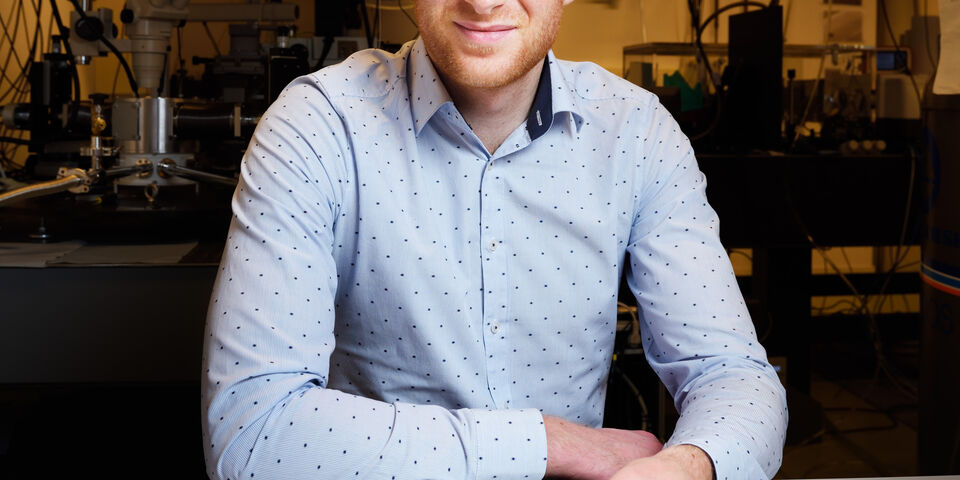Home Stretch | Power from heat with nanowires
Nanowires may be highly suitable for converting heat into electricity. When researching that possibility, PhD candidate Milo Swinkels discovered that some nanowires are almost perfect thermal conductors - the exact opposite of what is required for a thermo-electric appliance. Yet not all hope is lost for his young field of specialization.
More than two thirds of all the energy we generate is lost in the form of heat. For that reason it would be great if we could recover part of that heat by converting it into electricity. Simply put, you can generate electricity by adding thermal energy to a material that cannot release its energy in the form of heat, but that can do so in the form of an electric current.
For such thermo-electric appliances, nanowires are highly appropriate in principle, as physicist Milo Swinkels explains. “Nanowires are a thousand times thinner than human hairs. The idea is that this makes them too thin to conduct heat properly, whereas electrons can still move through structures of such dimensions.”
In order to find out how exactly heat transport in nanowires works in practice, Swinkels made a special chip with two minuscule thermal elements, between which he positioned nanowires of different dimensions – and of various materials. At that moment there was only one other research group, in Texas, where they produced such chips.
Measuring nanowires is a particularly difficult job
Indeed, measuring nanowires is a particularly difficult job, for even under the microscope the wires cannot be seen any more clearly than as small, dark spots. Hence, once Swinkels had built a working measurement system, it did not take long before he was sent nanowires by colleagues from Canada, Brazil and Italy who wanted to have their wires analyzed.
Swinkels obtained his PhD in the Photonics and Semiconductor Nanophysics group. Here they succeeded for the first time several years ago in making nanowires of the semiconductor gallium phosphide with an extraordinary crystal structure not found in nature. “That provided us with the opportunity to test the heat transport in nanostructures with diverging geometries.” And although most nanowires are truly poor heat conductors, the very flimsiest nanowires of this material prove to conduct heat excellently.
An extraordinary and unexpected outcome, which also makes it great fun, Swinkels says. “We think that the thermal conductivity in extremely thin gallium phosphide wires is so good because thermal vibrations of a high frequency are soon extinguished at the surface of the wire. As a result, all the heat is diverted at low frequencies.” And those low frequencies are hardly extinguished at all; you could compare that with the bass tones in the music played by your neighbor. They also carry much farther than the high-pitched tones.
To Swinkels’s satisfaction his efforts on the square micrometer will not die a silent death – which is a risk invariably connected with pioneering work in a young field of specialization. Within his group he has been succeeded by one postdoc and two PhD candidates, one of whom is financed partly by Shell. “It is gratifying to see that my work will not disappear into nothingness.”


Discussion